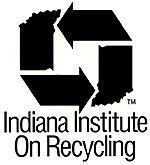
CASE STUDY No. 9625
KEY WORDS MOLDABLE LOOSEFILL CUSHIONING, WATER DEGRADABLE
Mosler Company
Electronics Systems Division
415 Hamburg Pike
Wayne, NJ 07470
Contact: William M. Sparta, Manufacturing Engineer. Tel: 201-595-4395. Fax: 201-595-4198
Summary
By replacing foam-in-place urethane with a moldable, water-degradable cushioning system, Mosler saves $27,000 a year in the cost to package precision equipment for drive-up banks. And on the receiving end, the starch-based cushioning material can be simply disposed of in water.
Action
Mosler manufactures pneumatic transfer equipment for drive-through service at banks. The two main components are a control panel and tubing. To cushion the control panel for shipment, Mosler had been using a urethane foam that expanded to the container size. This process required two 55-gallon drums per month of nontoxic liquids that, when mixed, molded to a solid foam. The shipping box also had to be lined with a special paper insert to protect it from deterioration by the urethane during hardening.
Mosler's new packaging process has the trade name Enviromold, from Enpack, a DuPont/ ConAgra company, and is being marketed by Norel Co., 223 Gates Rd., Little Ferry, NJ 07643 (contact Glen Wilson, 201-440-4400). The loosefill packaging material is manufactured of corn or potato starch. It is dispensed from a hopper mounted above the packaging station. Prior to placement in a shipping container, the cushioning material passes through a chamber where it is sprayed with a controlled amount of water. The operator then fills the shipping container halfway and places the bagged product--in this case, the control panel of an automatic teller machine--in the center. Then the shipping container is topped out with loosefill and stapled closed. Meanwhile, the moistened loosefill has molded to the shape of the product and cured as a semi-rigid mass that is strong enough to keep the product surrounded with a protective cushion during transit.
A big trade-off for Mosler in adopting the new system is the space occupied by the starchy pellets, which it receives at the rate of sixty 2-cu-yd bags per week (1,080 cu ft), for periodic loading into the 400-cu-ft hopper. Otherwise, the company counts these benefits:
Payback
Mosler recovered the $5,000 conversion cost in less than 3 months. The company also
reduced the cost of cushioning materials to 87¢ per cu ft from $1.24, for a saving of
$23,000 per year. Total cost reduction--materials and labor--is about $27,300 a year.
Assuming that customers dispose of the water-soluble, nontoxic cushioning material by
flushing it down the drain, this change in packaging saves Mosler's customers the expense
of disposing of about 3,000 cu yds of urethane foam per year.
